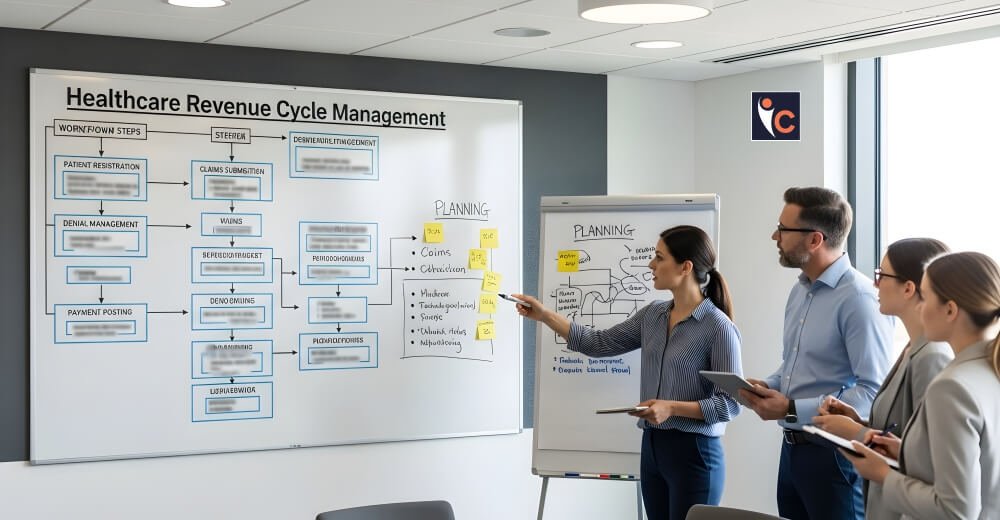Stay Ahead
The healthcare industry is undergoing major change due to fast technological growth, patient-focused design, and stricter regulations. With the changes in the reimbursement policies and an increase in patient demands, organizations will have to be prompt in response to survive in the competition. The world of Medical Billing Services has grown beyond basic claim processing; it now plays a central role in organizational success.
This article explores the latest industry insights to show how medical billing services are changing to meet new challenges and opportunities.
Automation and Intelligent Systems
Automation has transformed how billing teams work. Manual coding and documentation errors once caused delays, lower accuracy, and heavier workloads. New systems now read clinical notes and suggest correct ICD-11 and CPT codes instantly, greatly improving speed and precision.
Pre-submission audits verify claims before submission, which lowers denial rates by 30-40 percent. Teams do not waste time repairing rejected claims, and therefore, special cases are handled. The automated detection of analysis trends of denials in the past also aids in avoiding blemishes prior to the sending of claims.
This initiative would transform medical billing services into self-improving and efficient systems. Integrated Electronic Health Records assist clinicians when attending to patients, and proper documentation is facilitated to help them in billing appropriately. This reduces administrative strain and improves revenue capture while keeping compliance strong.
Patient-Centric and Digital Payment Experiences
Patients now expect the same convenience in healthcare billing that they receive from online shopping and banking. This shift pushes medical billing services toward greater transparency, easier access, and more flexible payment options.
Mobile billing platforms let patients view statements, set up automatic payments, and track balances on their phones. As telehealth becomes part of routine care, billing systems now support remote monitoring, virtual consultations, and asynchronous services, expanding reimbursement opportunities for providers.
Flexibility in payments is also becoming a rising concern. Sixty-five percent of providers currently offer installment plans, and care is more affordable, with up to 25,000 point-of-service collections rising. Apple Pay, PayPal, and Google Pay are digital wallets that enhance the speed and ease of the transactions.
Medical Billing Services in Cybersecurity
Regulations in healthcare change quickly, especially with the growth of telehealth and stricter privacy requirements. Manual changes in billing codes and submission rules may lead to delays and mistakes. The automated systems also modify the workflows as soon as new regulations are provided, which keeps organizations on par.
Security in cyberspace is also crucial. Medical care is a primary victim of cyber attacks, and encryption, authentication and high-tech protection systems are necessities. The RPA bots have become useful in activities like patient registration, eligibility verification, claims handling, and resolving denials.
This enhances scalability, which means that medical billing services can expand without a significant amount of administrative personnel. The human workers can, in turn, concentrate on appeals, monetary counseling, and top-level supervision.
Data Analytics in the Era of Value-Based Care
As value-based care becomes the dominant payment model, organizations need a deeper understanding of quality metrics and patient risk levels. Analytics tools built into billing services track these details and help ensure accurate documentation.
Predictive insights also indicate that patients are likely to face trouble paying their bills. The providers can provide early assistance with tailor-made payment schemes or financial consultation, which helps to decrease the bad debt and enhance patient interaction.
By linking clinical performance with financial data, analytics-focused billing systems help create a more accountable and patient-centered environment.
The Rise of 5th-Generation Billing Technology
Fifth-generation billing technology is taking shape in 2025. High-speed systems, connected workflows, and advanced digital platforms support real-time decision-making. Teams can now match claims to payer requirements during the patient visit rather than afterward.
As these technologies advance, medical billing services are becoming more efficient, adaptable, and user-friendly, helping providers thrive in a fast-changing healthcare industry.
Conclusion
The transformation of billing services is reshaping the financial foundation of healthcare. Automation, patient-friendly payment systems, strong cybersecurity, and data-driven tools now deliver higher efficiency and transparency. The providers that are willing to adopt these innovations have the opportunity to generate more revenue, reduce the administrative load, and enhance the relationship with patients.
Thriving in 2025 and beyond requires a modern, flexible approach that combines technology readiness, regulatory understanding, and a deep awareness of patient needs. With the right strategies, medical billing can shift from a routine task to a powerful driver of long-term healthcare success.





